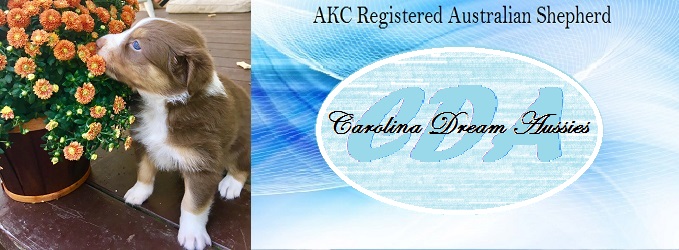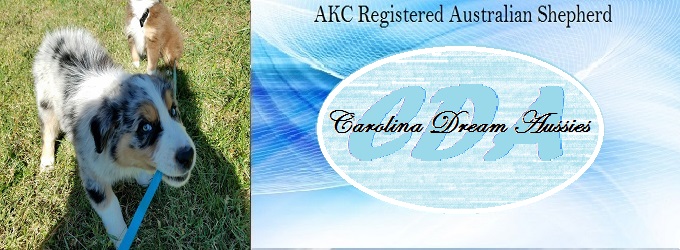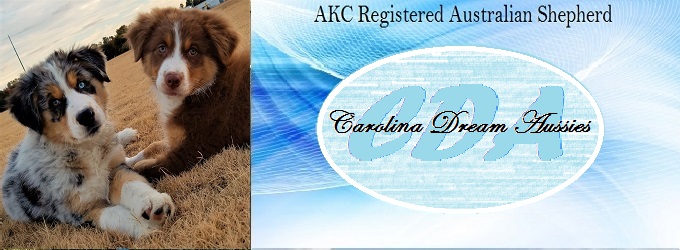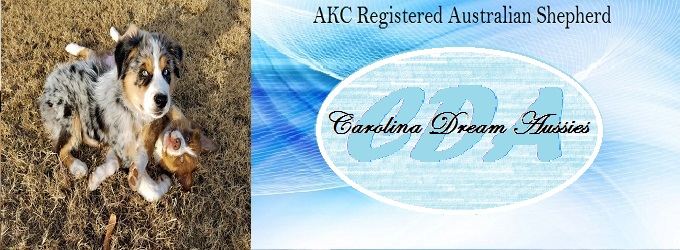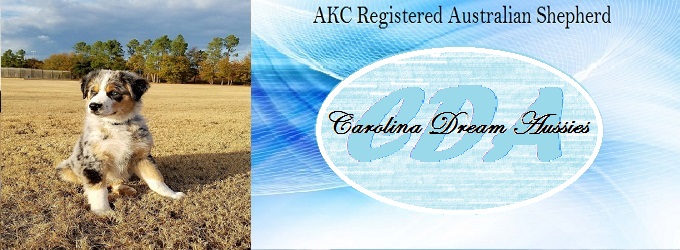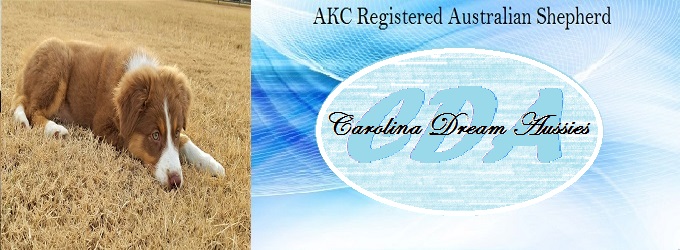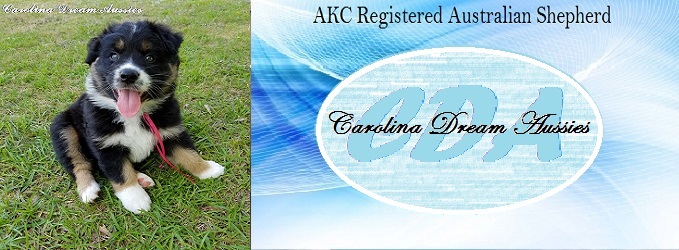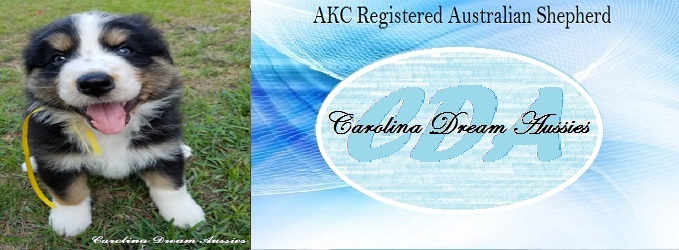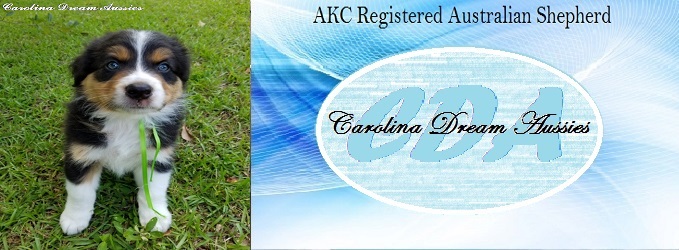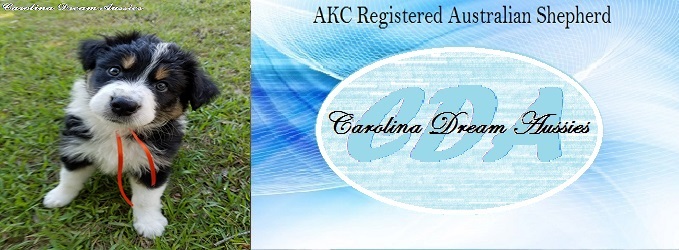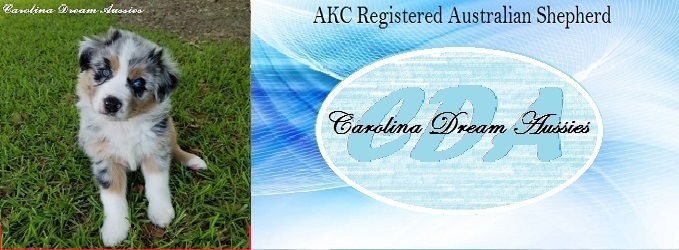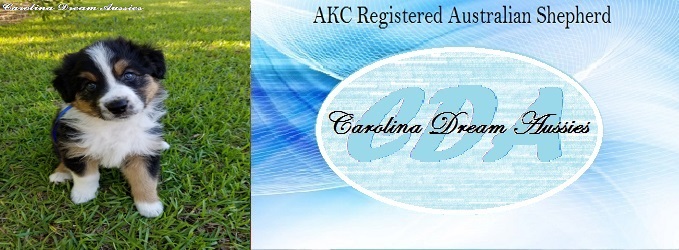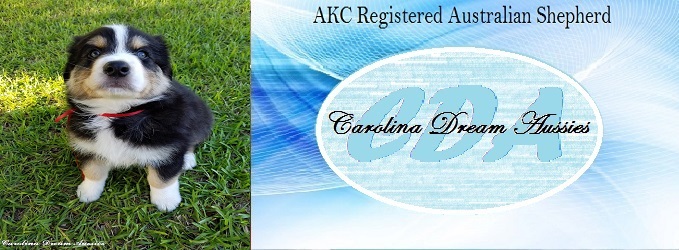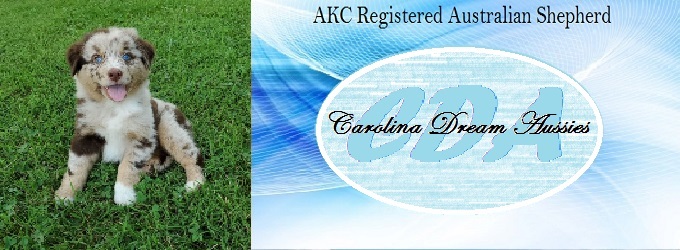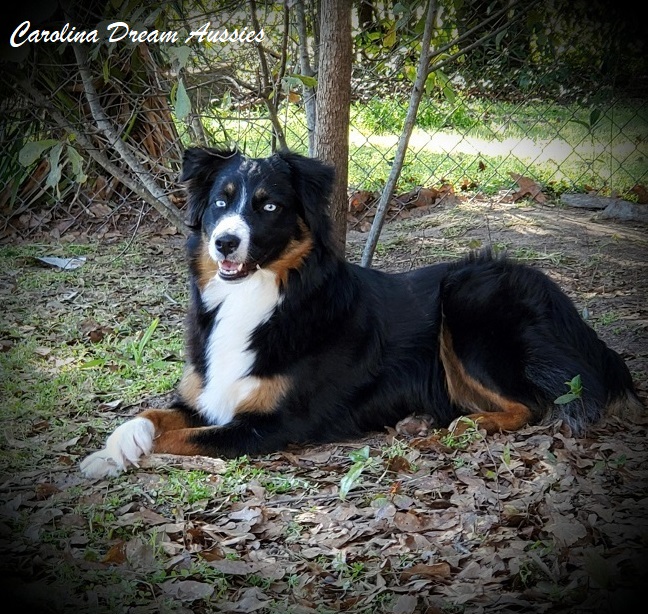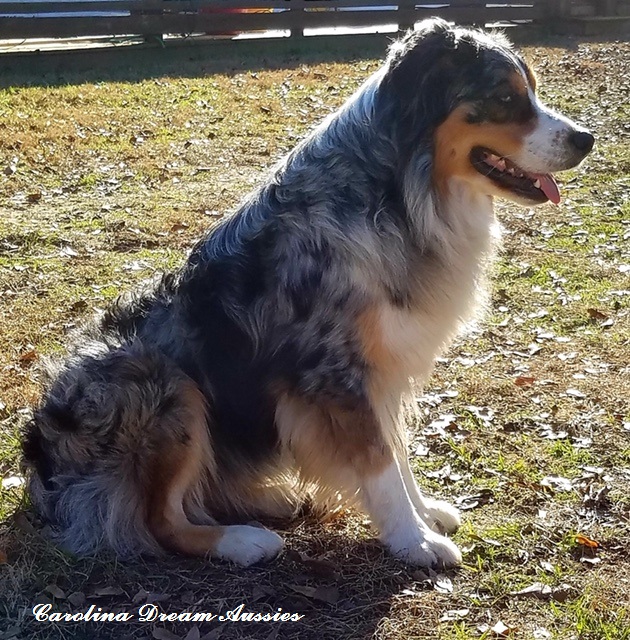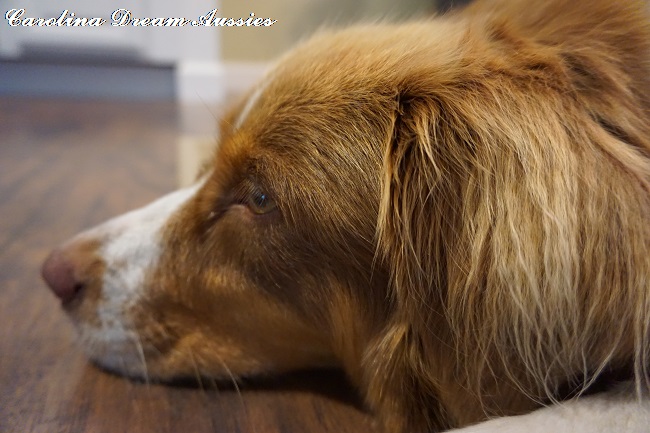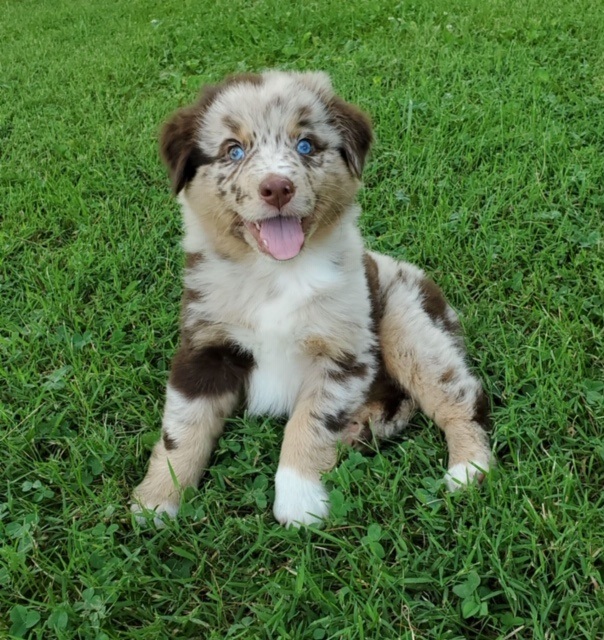BREED HISTORY
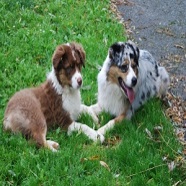 While there are many theories as to the origin of the Australian Shepherd, the breed as we know it today developed exclusively in the United States. The Australian Shepherd was given its name because of their association with the Basque sheepherders who came to the United States from Australia in the 1800’s. The Aussie rose rapidly in popularity with the boom of western riding after World War II, becoming known to the general public via rodeos, horse shows, movies and television. Their inherent versatility and trainability made them useful on American farms and ranches. The American stockmen continued the development of the breed, maintaining the versatility, keen intelligence, strong herding instinct and eye-catching appearance
While there are many theories as to the origin of the Australian Shepherd, the breed as we know it today developed exclusively in the United States. The Australian Shepherd was given its name because of their association with the Basque sheepherders who came to the United States from Australia in the 1800’s. The Aussie rose rapidly in popularity with the boom of western riding after World War II, becoming known to the general public via rodeos, horse shows, movies and television. Their inherent versatility and trainability made them useful on American farms and ranches. The American stockmen continued the development of the breed, maintaining the versatility, keen intelligence, strong herding instinct and eye-catching appearance
Australian Shepherds have been registered by various registries since the early 1950’s. In 1990, the United States Australian Shepherd Association was established as the parent club of the Australian Shepherd representing the breed to the American Kennel Club. On September 1, 1991, the AKC recognized the Australian Shepherd breed and on January 1, 1993, accepted them into the Herding Group
TEMPERAMENT
Truly, the Australian Shepherd is a highly versatile dog. “Aussies” (as they are lovingly nicknamed) are very active dogs that need a great deal of exercise on a daily basis to prevent them from becoming bored or frustrated and consequently developing destructive habits. Because of their high energy level, combined with high intelligence, Aussies need to be given a “job” to perform, be it shepherding the children, protecting the house, herding livestock or competing in dog events. One of the most frequent reasons Aussies get turned over to rescue groups is that their owners didn’t anticipate how energetic these dogs are and weren’t willing or able to constructively channel that energy through training. Aussies want to be with their owners all the time, which is why they insist on following their owners from room to room in the house, and love nothing better than going along in the car or truck on errands. They can be highly territorial and protective of their masters’ possessions, potentially causing serious difficulties unless this behavior is controlled with proper training.
